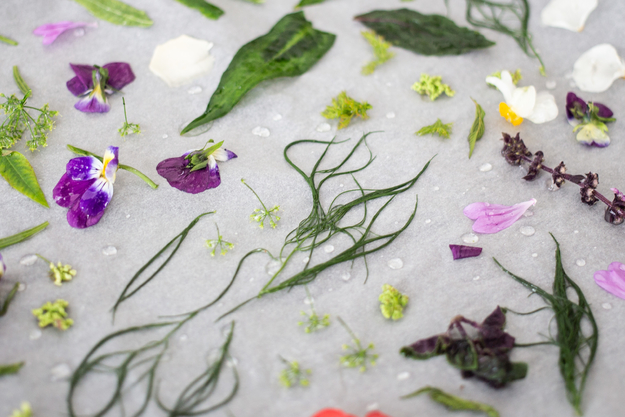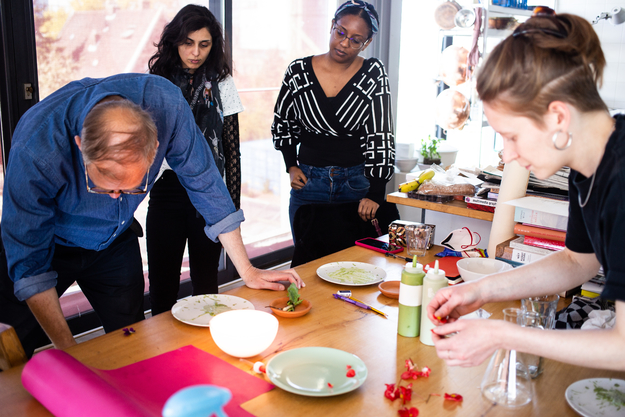We started researching ingredients and collecting trays full of fresh herbs that we transferred to different aggregate states. Sorrel became a delicious caramel that became a drink when pouring hot water over it, spruce tips produced some wonderfully aromatic salt and deep-fried rice paper filled with flowers made for some surprisingly beautiful little artworks.
Experiments with sugar and sorrel and begonia from the Aquaponics Greenhouse -


And, as we had already reached the stage where we trusted each other blindly, we decided to pop some magic pills together. As in miracle berry pills, made from an African fruit that contains the active ingredient miraculin. It is simple science – the miraculin inhibits the taste receptors and makes sour taste sweet. But that doesn’t make the experience any less interesting. Think of drinking vinegar just like syrup, pickled cucumbers suddenly get a soft honey glaze and fresh cut pineapple and lemon create this addictive sweet-sour-sensation in your mouth that you get after eating too many sour gummy worms.
A hot coffee eventually ended this experience on our tongues, but it did not end the flow of ideas and questions about to what degree we are able to affect our perception of taste and what even defines sourness or sweetness. After all, is taste just a social sense, created by cultural context?
Read more about day four here.

